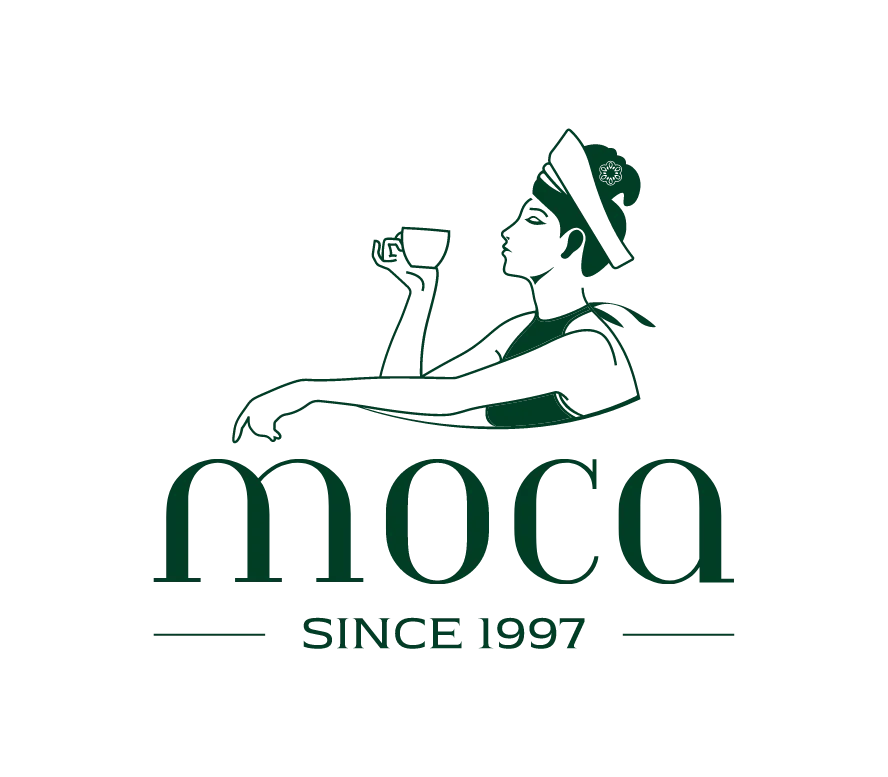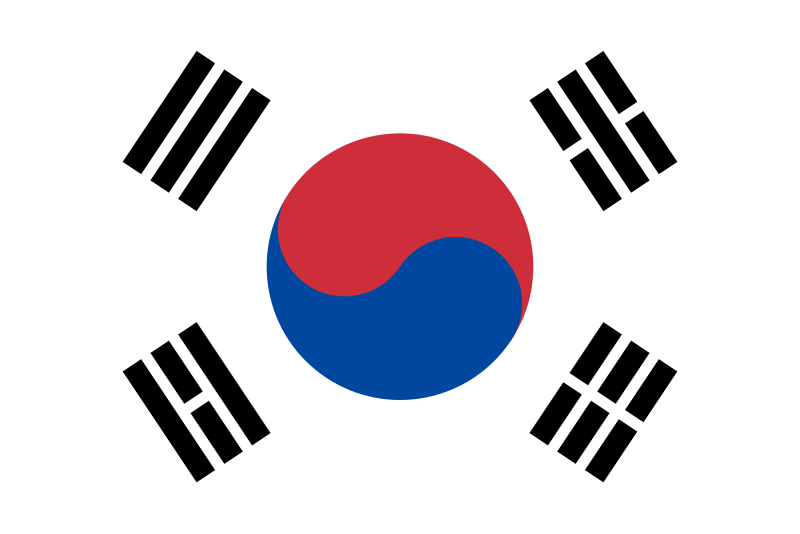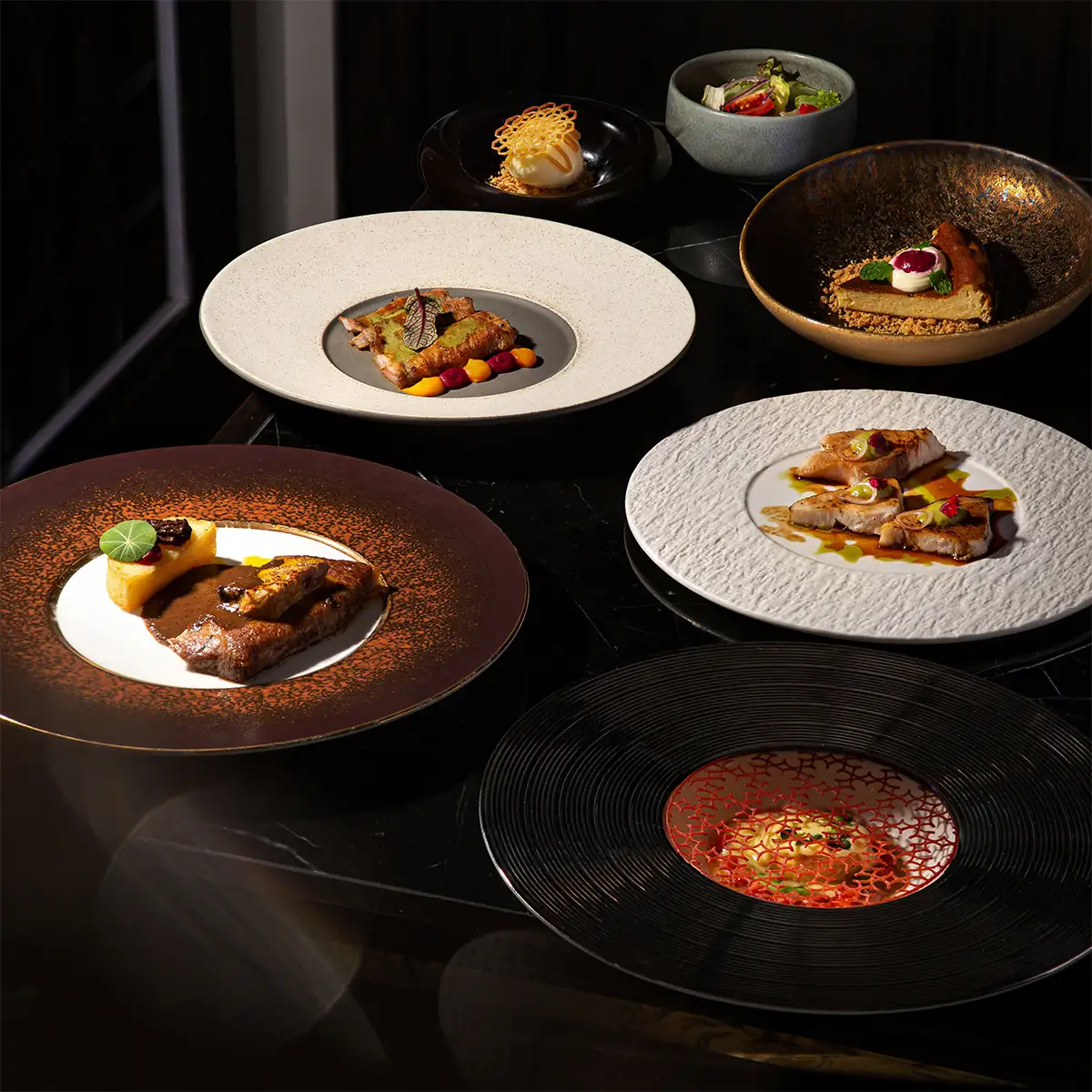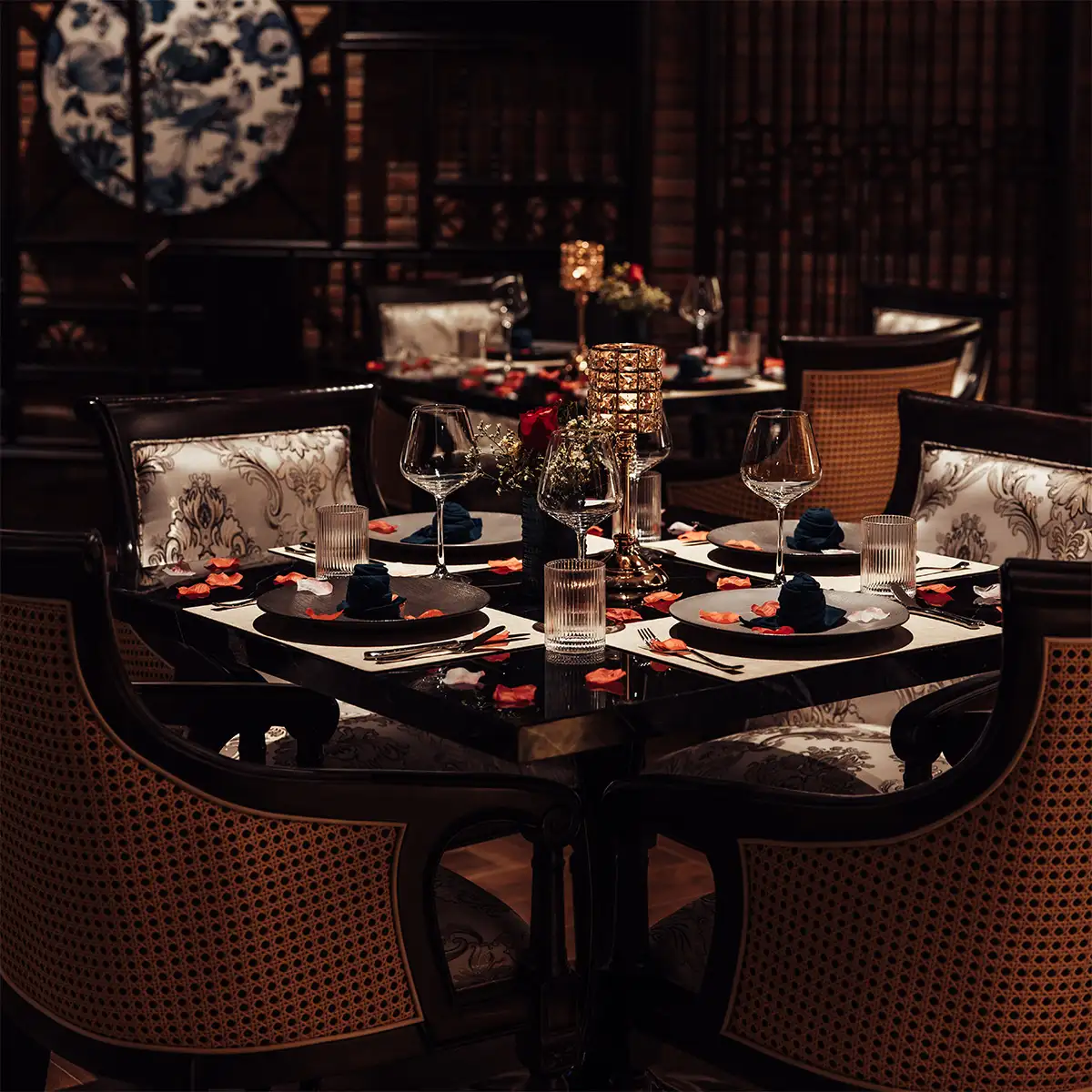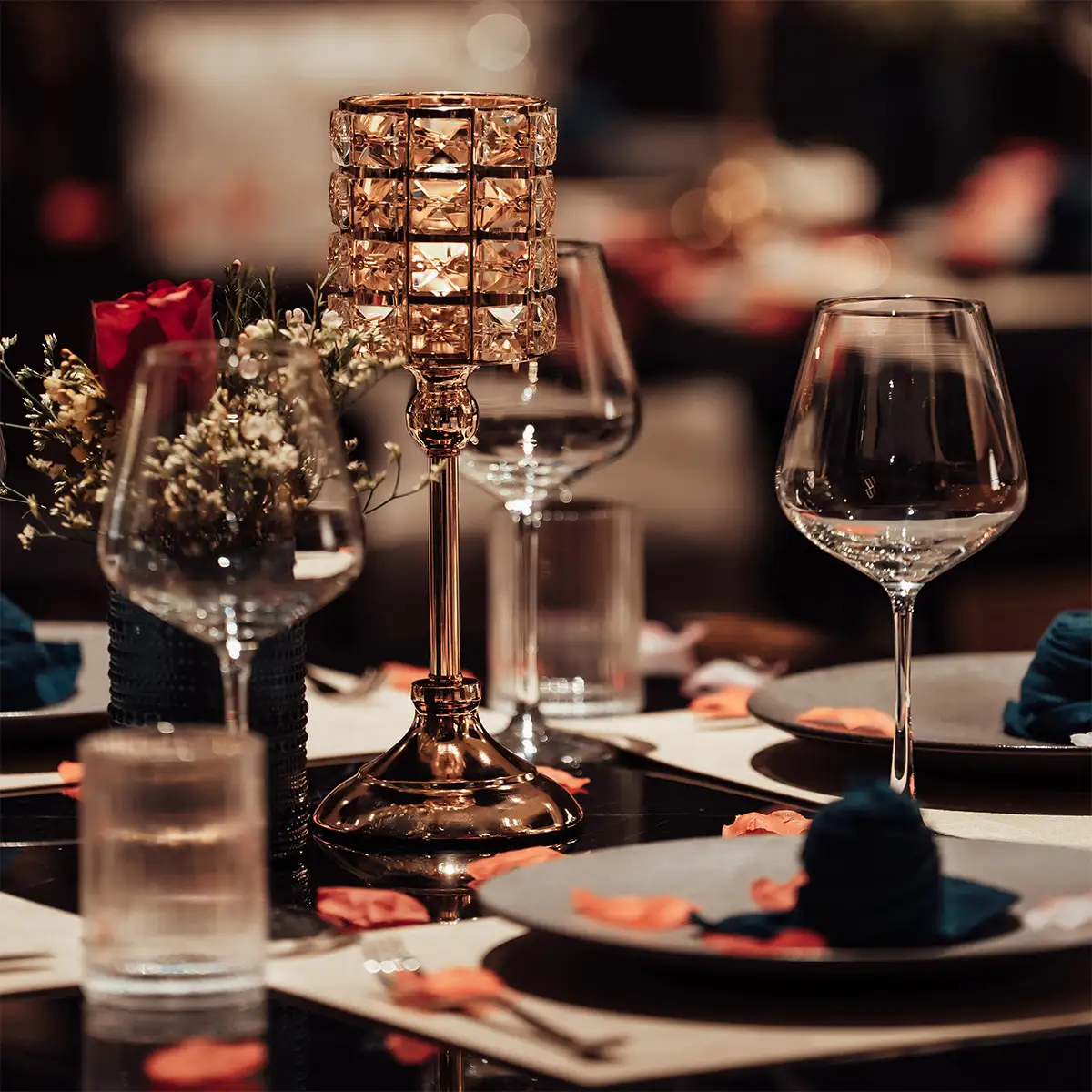- 1. Understanding Hanoi's premier dinner scene
- 1.1. Key geographical hubs for upscale dining
- 1.2. Essential considerations for the discerning diner
- 2. The culinary spectrum of dinner excellence
- 2.1. Modern Vietnamese haute cuisine
- 2.2. International fine dining: Global standards in Hanoi
- 2.3. The importance of the beverage program
- 3. Service and ambiance: The pillars of a premium dinner
- 3.1. Defining world-class service standards
- 3.2. Architectural design and atmosphere
- 3.3. Culinary integrity and sourcing
- 4. Moca Dining: Elevating the Hanoi dinner experience
- 5. Practical logistics for a flawless evening
Hanoi’s culinary scene has evolved beyond its famed street food to embrace world-class gastronomy. Today, a true dinner Hanoi experience is defined by refined ambiance, impeccable service, and exceptional culinary artistry. This guide highlights the city’s top fine dining destinations, showcasing the quality, exclusivity, and sophistication that set the standard—culminating in the excellence of Moca Dining.
1. Understanding Hanoi's premier dinner scene
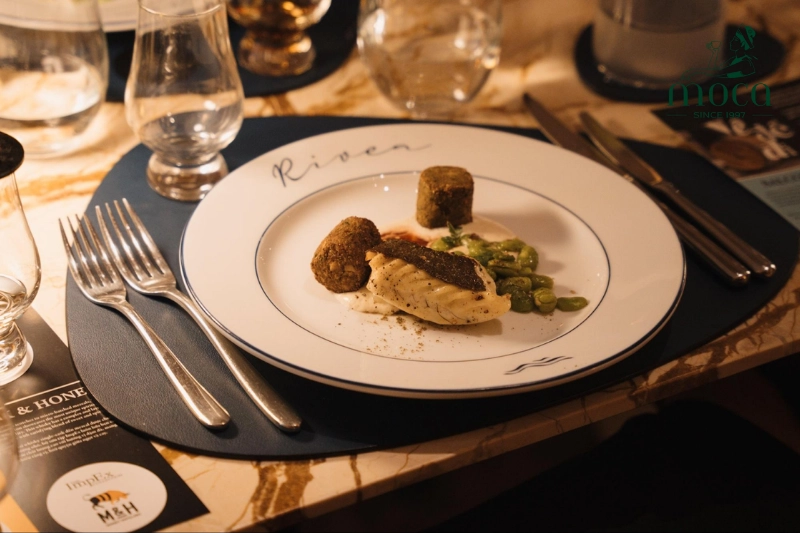
Discover Hanoi's two premier fine dining hubs: the classic elegance of the French Quarter and the contemporary charm of Tay Ho.
To navigate the sophisticated world of upscale dining in Hanoi, a discerning guest must first understand its geography and protocols. The city’s premier offerings are not scattered randomly but are concentrated in distinct hubs, each with its own character.
1.1. Key geographical hubs for upscale dining
The primary locales for a distinguished dinner in Hanoi are the historic French Quarter and the contemporary Tay Ho district.
- The French Quarter (Hoan Kiem): This area is the heart of classic elegance. Housed within beautifully preserved colonial villas and historic buildings, the restaurants here exude a timeless charm. The ambiance is one of legacy and tradition, making it the ideal setting for classic European and refined Vietnamese dining.
- Tay Ho (West Lake): Known for its expansive water views and cosmopolitan community, Tay Ho presents a more modern, international flair. Venues here are often characterized by contemporary architecture, rooftop bars, and a dynamic, trend-forward atmosphere, attracting a clientele that appreciates innovation and global culinary currents.
1.2. Essential considerations for the discerning diner
Securing a place at a top-tier establishment requires foresight and an understanding of local customs.
- Reservation Protocols: For any reputable venue, advance booking is not merely recommended; it is essential. This is particularly true for those wishing to experience a multi-course tasting menu or dine during peak hours (typically 7:00 PM - 9:00 PM). A reservation made several days or even weeks in advance ensures a seamless experience.
- Dress Code Expectations: While Hanoi is a relaxed city, its premier dining establishments uphold international standards. The most common requirement is "smart casual"—meaning collared shirts, trousers or smart jeans, and closed-toe shoes for gentlemen. Overtly casual attire such as shorts, tank tops, and flip-flops is generally considered inappropriate. A few exclusive venues may require a more formal dress code, which will always be specified during the reservation process.
2. The culinary spectrum of dinner excellence
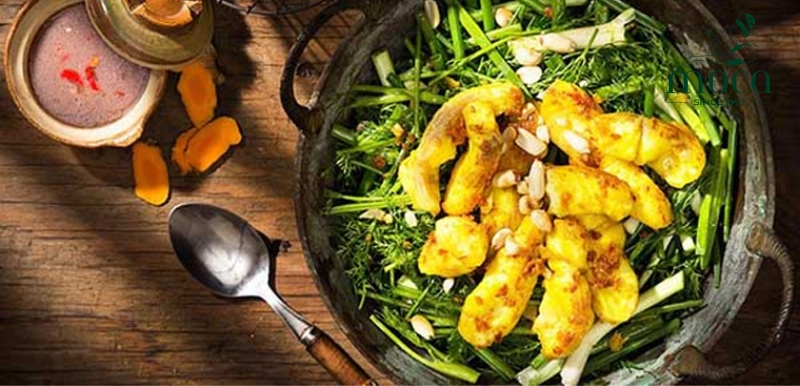
Hanoi’s dinner scene shines with a fusion of modern Vietnamese cuisine, global fine dining standards, and expertly curated wine pairings.
The pinnacle of the dinner Hanoi scene is defined by its diverse yet exacting culinary offerings, from reimagined local traditions to global haute cuisine.
2.1. Modern Vietnamese haute cuisine
This movement represents the soul of contemporary Vietnamese fine dining. Chefs are focusing on sophisticated interpretations of Northern classics, elevating familiar flavors to new heights. The emphasis is on hyper-local and seasonal ingredients, such as wild-caught river fish, unique mountain herbs, and artisanal fish sauce.
Example of Excellence: A signature dish exemplifying this trend might be a deconstructed Chả Cá Lã Vọng. In this reinterpretation, a prime cut of sturgeon is marinated in turmeric and galangal before being cooked sous-vide to a precise temperature. It is then served with dill foam, delicate rice noodle crisps, and a highly concentrated fermented shrimp paste emulsion, blending traditional tastes with modern textures and presentation.
2.2. International fine dining: Global standards in Hanoi
Hanoi is now home to establishments that rival their counterparts in Paris, Tokyo, or New York.
- Contemporary European cuisine: These kitchens are laboratories of technique. Chefs, often with Michelin-star backgrounds, utilize methods like spherification, cryo-concentration, and precise temperature control to transform premium imported ingredients—such as French foie gras, Italian white truffles, or Spanish Ibérico ham—into culinary art.
- Specialized concepts: The market has matured to support highly specialized concepts. High-end Japanese Omakase counters, where a master chef prepares a personalized menu for a handful of guests, have become highly sought-after. Similarly, dedicated steakhouses offering specific breeds and cuts of dry-aged beef (e.g., USDA Prime, Australian Wagyu) cater to a knowledgeable clientele.
2.3. The importance of the beverage program
A world-class dinner is incomplete without an equally impressive beverage program. An expertly curated wine list, featuring a thoughtful balance of Old World and New World selections, is a minimum requirement. The true mark of a premier venue, however, is the presence of a professional sommelier. This expert’s role extends beyond simply recommending a bottle; they are storytellers who guide guests through the cellar, creating pairings that elevate each course and enhance the overall Hanoi dinner experience.
3. Service and ambiance: The pillars of a premium dinner
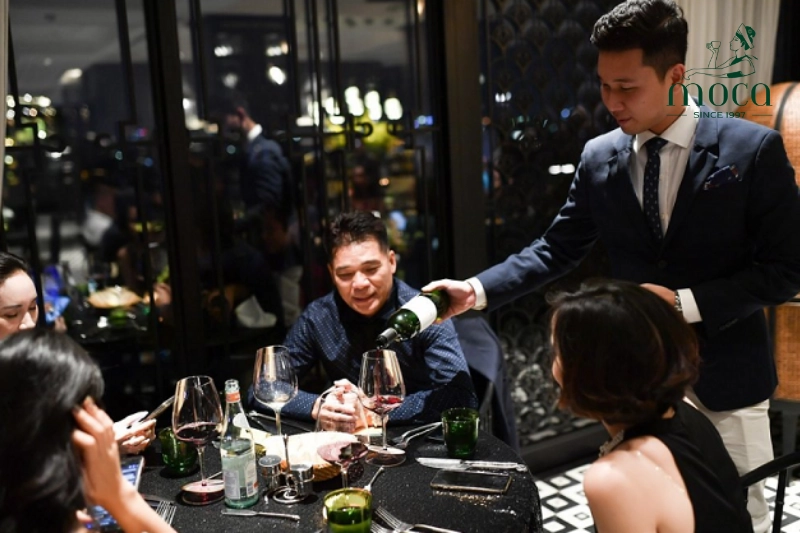
Refined service, elegant ambiance, and ethically sourced ingredients—these are the pillars of Hanoi’s world-class dining experience.
Beyond the plate, the service and atmosphere are what transform a meal into a lasting memory. These intangible elements are the pillars of a truly premium dinner.
3.1. Defining world-class service standards
Exceptional service is an art form, defined by a delicate balance of attentiveness and discretion.
- Staff knowledge: At a premier venue, the service team is trained to the level of culinary ambassadors. They possess an encyclopedic knowledge of the menu, including every ingredient's origin, the techniques used in its preparation, and the story behind the dish. They are also adept at navigating dietary restrictions with confidence and grace.
- Anticipatory service: The finest service is almost invisible. It is the practice of anticipating a guest's needs before they are articulated—refilling a water glass at the perfect moment, noticing a subtle cue for the bill, or providing a shawl in a cool breeze on a terrace. This requires immense training and emotional intelligence.
3.2. Architectural design and atmosphere
The physical environment is the canvas upon which the dinner experience is painted. Top venues in Hanoi masterfully utilize design to cultivate an atmosphere of exclusivity and intimacy. The role of lighting and sound is paramount.
Research, including studies from institutions like the University of Oxford, has demonstrated that sensory cues significantly impact taste perception. Softer, warmer lighting and controlled acoustics can enhance the richness and complexity of flavors, making the dining experience more profound. Table spacing is also a critical, non-negotiable element, ensuring private conversations remain private.
3.3. Culinary integrity and sourcing
A chef's philosophy is the foundation of a restaurant's integrity. A commitment to sustainable practices and ethical sourcing is no longer a trend but a core tenet of modern fine dining. This involves building direct relationships with farmers, fishermen, and artisans.
Example of Sourcing Integrity: Consider the supply chain for a premium ingredient like Hokkaido scallops. A top-tier restaurant will have a direct line to a specific fishery in Japan, ensuring the scallops are harvested, processed, and air-freighted within a 24-hour window to guarantee peak freshness and sweetness. This meticulous management of the cold chain is a testament to an unwavering commitment to quality that the discerning guest can taste.
4. Moca Dining: Elevating the Hanoi dinner experience
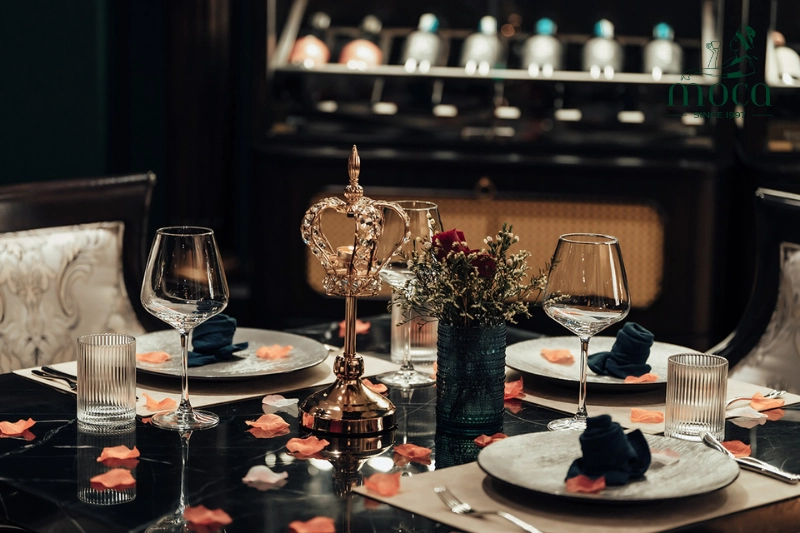
Moca Dining – where culinary artistry, refined design, and personalized service converge to elevate Hanoi’s fine dining experience.
Having established the benchmarks for an extraordinary dinner in Hanoi, we now turn to Moca Dining—an establishment built not just to meet these standards, but to transcend them.
Our commitment is to contemporary elegance and culinary precision. The Moca Dining ambiance is a deliberate study in sophisticated design, where every element—from the bespoke furniture to the curated art—is chosen to create an environment of refined tranquility. We set ourselves apart by offering a sanctuary from the city's bustle, allowing our guests to immerse themselves fully in the culinary journey.
Our Executive Chef, a visionary with extensive experience in globally acclaimed kitchens, has crafted a series of menus that showcase the pinnacle of contemporary European cuisine with a respectful nod to Vietnamese provenance. Guests may choose from our 5-course Discovery Menu or the 8-course Signature Tasting Menu, each designed to be a symphony of flavors, textures, and aromas.
Moca Dining is designed to accommodate the most exclusive of requests. Our private dining room offers a completely secluded and customizable environment for corporate events, board meetings, or intimate family celebrations. Furthermore, the Moca Dining cellar is a core component of our identity, featuring a deep and diverse wine list with rare vintages and boutique labels, overseen by our resident sommelier who is dedicated to crafting the perfect pairing for your palate.
5. Practical logistics for a flawless evening
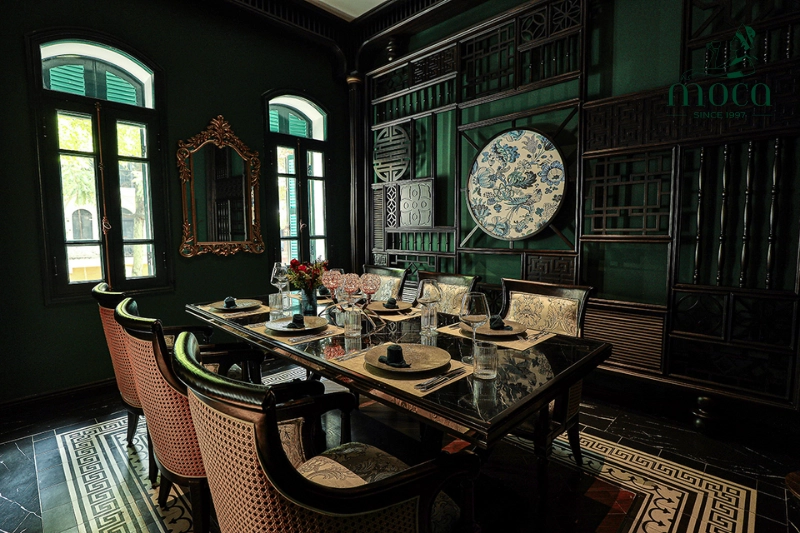
Careful dietary planning and seamless transportation ensure a flawless evening at Moca Dining.
A perfect evening requires seamless logistics from start to finish.
- Navigating dietary restrictions and allergies: We hold the well-being of our guests in the highest regard. It is imperative that any specific dietary needs or allergies are communicated at the time of reservation. This allows our culinary team, as is the standard at Moca Dining, to re-engineer dishes or create bespoke alternatives that maintain the integrity and quality of the dining experience without compromise.
- Transportation and access: To ensure a stress-free arrival and departure for your dinner in Hanoi, we recommend utilizing professional car services or reputable ride-sharing applications. Parking in central districts can be challenging, and a private car service removes any potential for inconvenience, allowing your evening to remain focused on enjoyment.
Dinner Hanoi now stands as a serious contender on the global fine dining stage, offering a refined culinary landscape for both discerning travelers and locals. The best experiences combine masterful cuisine with impeccable, intuitive service—essential criteria for any top-tier dining choice. For an unparalleled, professional, and truly memorable dinner in Hanoi, we invite you to secure your reservation at Moca Dining. Allow us to demonstrate our commitment to excellence and provide you with an evening that will not soon be forgotten.
